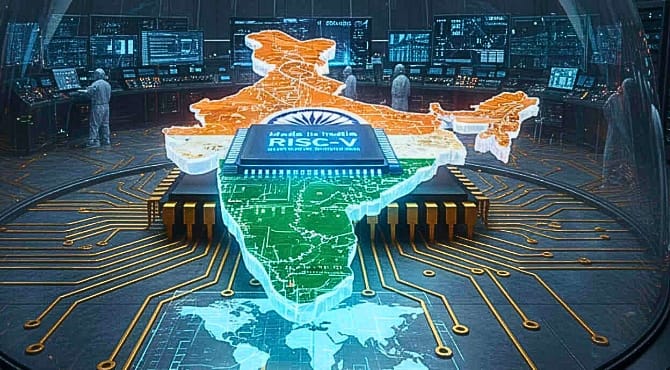India’s move to tech independence has been powerfully extended. The announcement of the first homegrown 7 nanometer processor in India places the country among those that are leading the world in highly complex semiconductor design. It is pretty much a scientific breakthrough, a milestone made known to the public by Minister Ashwini Vaishnaw on the 18th of October 2025. But more than that this breakthrough is an indicator of India’s willingness and ability to fuel the technology that the future will demand.
In today’s digital world, microchips form the heart of every modern device -from smartphones and computers to satellites and defence systems. By developing its own advanced processor, India is ensuring that it can design and control the technology that drives its economy and national security.
The 7 nm processor is a product of IIT Madras’s efforts via the SHAKTI project, which was initiated in 2013. SHAKTI is built around the open source RISC-V based ISA, which gives the academic community, entrepreneurs, and the whole sector freedom from the clutches of foreign technology and from costly licenses. This freedom is an open invitation for innovation and at the same time, it grants Indian Engineers access to a vast pool of already available applications, which can be easily modified into efficient, affordable, and local development-friendly ones.
This effort is financed by another ministry—the Ministry of Electronics and Information Technology (MeitY)—via the India Semiconductor Mission (ISM) program. The ISM, worth ₹76,000 crore, was designed to localize semiconductor and display manufacturing in India. The initiative ISM sees as a great opportunity for the three pillars of knowledge—universities, industry, and startups—to shake hands and thus create a solid ecosystem that feeds both research and talent.
Compact 7 nm technology is a major leap to the fore. Transistors of a smaller size mean increased speeds, optimized (better) output, and less power consumption. AI, 5G, the financial sector, cloud-based services, and defense technologies are some of the major fields (areas) where such processors will be used. Besides technological breakthroughs, these fields will enhance employment in skilled manpower, increase exports, and attract massive investments.
As a result of this feat, India becomes an economically attractive and reliable partner in the global supply chain of semiconductors. There are more than 10 semiconductor initiatives underway (crossing in sum 6 different states) with a total investment of over 1.6 lakh crore rupees. Over 288 educational institutions are beneficiaries over MeitY’s Design Linked Incentive (DLI) scheme, which is targeted at young engineers active in the fields of chip design and development. India’s tech community is growing more confident as evidenced by the 24 sanctioned chip design projects and 87 companies which use advanced design tools.
Besides economic development, this advancement secures the country and the strategic autonomy in the long run. India by means of designing and manufacturing its own processors will lessen her dependence on foreign chip import which might put her in risky positions in critical defense or communication systems. Also, it acts as a digital sovereignty enhancer—digitally assuring that India’s data, devices, and infrastructure are kept in the Indian way of managing them.
The homegrown 7 nm processor is much more than a technological landmark; it is a portrayal of India’s self-reliance, creativity, and global leadership ambitions. It is the illustration of how research, education, and industry can be the three wheels of a future-ready nation cart.
For a country like India, powering next-generation technology is not merely staying in the race but being able to lead it. From bolstering the economy, and job creation to safeguarding national interests, the provocation of such a path takes root far beyond the presence of laboratories and factories.
With this big bet on cutting-edge technology and farming local talents, India is setting the scene to do the chip-making-shift and do it in India but for the world— a decisive move towards Digital transformation-era-driven Atmanirbhar Bharat.









